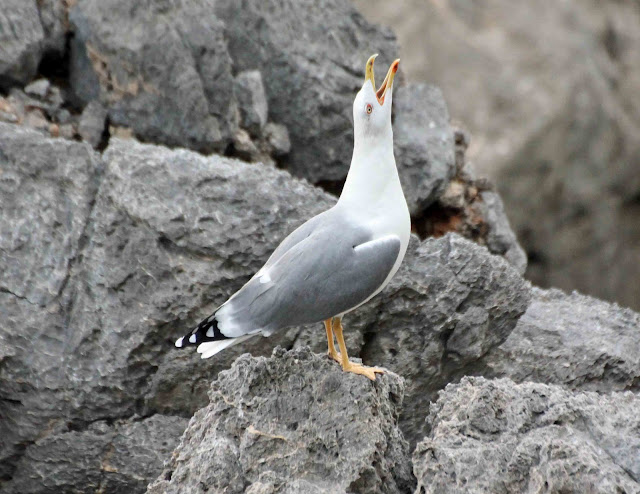The big boys (owls) didn’t want to come out to play when I
was at Borrevannet today. I gave it 4 and a half hours but would undoubtedly
have increased my chances if I had been there in the evening. There were seven
other birders looking though which at least made it a sociable dip.
Woodpeckers were much in evidence with Lesser Spotted
(dvergspett), Great Spotted (flagspett), Green (grønnspett) and Black
Woodpecker (svartspett) all showing well.
It looks like the Ural Owl (slagugle) has been present for a
few days (and possibly two weeks) so will hopefully hang around a while longer
and reward those who persevere (as I write this at 6pm a message has come through that it has just been seen).
With no interesting pictures of owls to show in the blog I
thought what bird topic fills me with most enthusiasm. As I couldn’t quiet
agree with myself as to the answer to this I thought I might just as well write
about the birding topic that undoubtedly fills me with least enthusiasm – the large
gull complex formerly (and conveniently) called Herring Gull (gråmåke) but now
split into a myriad of different species. In Mallorca there were two species of
“Large White-headed Gull”: Auduoin’s Gull (middelhavsmåke) and Yellow-legged
Gull (gulbeinmåke). Auduoin’s is a beautiful and easy to identify bird (in adult
plumage at least). Yellow-legged Gull on the other hand is ugly and closely
resembles the Herring Gulls of northern Europe. Not even the yellow legs of
adult birds are enough to identify this species as Herring Gulls can
occasionally have equally yellow legs (commonest in Baltic breeders?).
I have decided that I will work on increasing my enthusiasm
for LWH Gulls partly as one shouldn’t be birdist but also in the Oslo area
there should actually be good opportunities to turn up a real rarity amongst
the many hundreds of Herring, Lesser Black-backed (sildemåke) and Great
Black-backed Gulls (svartbak). I therefore spent some time looking at the
Yellow-legged Gulls in Mallorca and even went as far as taking some pictures
which I intend to comment on:
Adult Yellow-legged Gull (gulbeinmåke)
 |
| note: yellow legs, dark grey back, black eye patch forming around eye (winter plumage), red orbital eye ring and angular head |
 |
| Giving diplay call |
 |
| This bird appeared paler both on the back (approaching Herring Gull) and also on the bill (maybe a 4k?) |
Yellow-legged Gull 3k
Yellow-legged Gull 2k
 |
| 2nd calendar bird (2k) transitioning from 1st summer to 2nd winter plumage. Dark eye mask on white face is a good feature |
 |
| I had previously labelled this bird as a 1cy but the extent of moult including on the coverts shows this to be a 2 cy but obviously not as advanced as the bird above. |
Yellow-legged Gull 1k
 |
| From behind showing the bold black tail bar and dark tertials with only thin white tips (Herring Gull would have far more patterned tertials) |
 |
| out of focus but the tail pattern and only slightly paler inner primaries can be seen (Herring Gull would normally have a distinctly paler inner primaries) |
 |
| Poor picture but showing uperwing of the 1st winter |
And finally a picture of a large gull that is nice to look at:




No comments:
Post a Comment